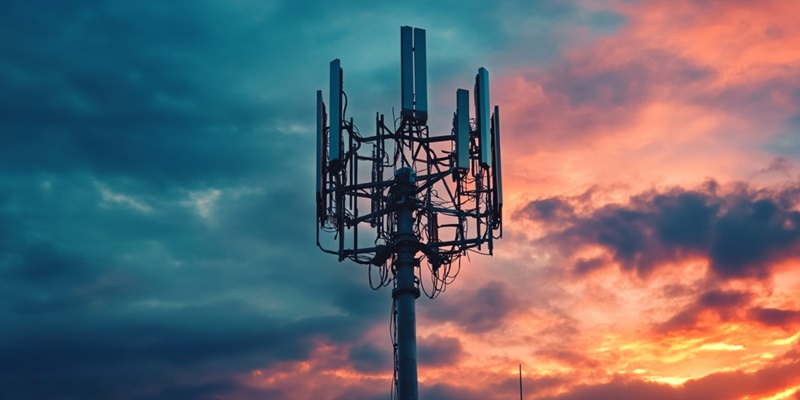Ericsson and MasOrange, an amalgamation of Orange Spain and Masmovil, have announced a significant five-year partnership that aims to create a future-ready Open RAN network. Under the terms of this collaboration, Ericsson will integrate the existing networks of Orange Spain and Masmovil to bolster the consolidated MasOrange network with high-performance and sustainable solutions designed for open architecture. Alongside this initiative, there will be the deployment of Ericsson-powered 5G Standalone (5G SA) in rural Spain starting in October 2024.
Advancing 5G Infrastructure
Integration and Network Enhancement
The project is set to develop one of Europe’s most extensive and modern 5G SA mobile networks, significantly enhancing 5G services for subscribers across the country. MasOrange’s CEO, Meinrad Spenger, underscored the importance of this collaboration, noting its critical role in developing an open and programmable mobile infrastructure that will spur technological advancements and promote sustainable growth. Spenger highlighted that a robust, open infrastructure is pivotal for the European telecommunications industry’s future competitiveness and technological leadership.
Ericsson’s Jenny Lindqvist echoed these sentiments, emphasizing that the industry’s vision is grounded in open networks that drive rapid innovation and growth through network APIs and developer ecosystems. This collaboration highlights the strategic importance of such open networks in driving the next wave of telecom innovation. Moreover, this partnership reflects a concerted effort to align the technical and strategic objectives with broader industry trends favoring open, robust, and developer-friendly systems.
Focus on Network Optimization
The partnership will see MasOrange upgrading its network using an array of sophisticated Ericsson Radio System products and Core solutions, aimed particularly at enhancing network capacity and user experience through 5G Massive MIMO Time Division Duplex (TDD) technology. This upgrade will support simultaneous multiple signal transmissions, effectively maximizing spectrum efficiency and boosting overall network capacity. Improving network capacity is fundamental in accommodating the expected surge in data traffic due to increased 5G adoption.
Additionally, the project will prioritize network densification and optimization to significantly enhance performance, coverage, and capacity. Currently, MasOrange’s 5G network reaches 86% of Spain’s population, covering around 3,500 municipalities. These numbers are set to rise, with plans in place to expand 5G coverage to almost 3,700 municipalities by the end of 2024. Specifically, they aim to cover 100% of the nearly 750 Spanish municipalities with populations exceeding 10,000 by the same time frame, demonstrating a strategic focus on both urban and rural areas to provide ubiquitous, high-quality 5G connectivity.
Investment and Expansion
Financial Commitment
MasOrange’s extensive network currently includes nearly 10,000 sites operating in the 700 MHz band, with many of these sites serving smaller towns and villages, underscoring the company’s commitment to broadening digital inclusion. Moreover, MasOrange has outlined its investment strategy, planning to invest 4 billion euros ($4.3 billion) in Spain over the next three years. This substantial investment aims to springboard the country’s digital infrastructure into new heights and mark a significant evolution in the nation’s telecommunications landscape.
The investment follows the completion of the Orange-Masmovil joint venture, which received approval from both the EU and Spanish government earlier this year. This merger signifies a significant consolidation within the industry, likely to foster greater operational efficiencies and a more cohesive strategy toward network deployment and innovation. The newly formed entity, MasOrange, is now positioned to leverage synergies and drive forward with its ambitious plans, supported by Ericsson’s state-of-the-art technology and expansive expertise.
Broader Implications for the Market
Ericsson and MasOrange, a merger between Orange Spain and Masmovil, have announced a significant five-year partnership aimed at establishing a future-focused Open RAN network. This collaboration involves Ericsson integrating the current networks of Orange Spain and Masmovil to enhance the unified MasOrange network. Ericsson will provide high-performance and sustainable solutions tailored for open architecture. Additionally, this initiative includes the rollout of 5G Standalone (5G SA) technology in rural Spain, which is scheduled to begin in October 2024. The deployment of 5G SA is a crucial step towards improving connectivity in underserved regions, ensuring better service quality and coverage. This partnership highlights Ericsson’s continued commitment to innovation and sustainability in telecommunications, as well as MasOrange’s dedication to enhancing services for their customers. The combined expertise of both organizations promises to deliver a robust and future-ready network, marking a notable advancement in Spain’s telecommunications landscape.

